The first Central Asian biennale of sound art and new music "KORKUT" takes place in Almaty from October 7 to November 4, with an exhibition by the famous Kazakh art group "Kyzyl Tractor.
The group exhibition "Sound Off" is a research of artists on the subject of sound. Sound for "Kyzyl Tractor" is a way to reconnect and deconstruct oral tradition, a kind of intangible heritage, roaming the steppe with people and so fixing the collective memory. In the performances of "Kyzyl tractor" we also see an attitude toward sound as a way to heal a person with a sound wave, which is probably the reason for the creation of a large-scale drum for the work of the Ritual of Purification (see photo below).
The curator of the exhibition was Vladislav Sludsky, who has worked with Kyzyl Tractor for many years.

Vladislav, why did you decide to curate this exhibition?
It just so happened that I've wanted to do something at the Yhlas Museum of Musical Instruments for a long time. I like it, it's a good museum. And I've been working with Kyzyl Tractor for many years, so I wanted to look at their language from a new angle.
The fact that we curated their big retrospective at Mana Contemporary (ed. Cultural Center in New Jersey, USA) in 2018 with Lisa Ahmadi also played an important role. I was going through a lot of material in the archives at the time, it was a cool experience. And so part of this exhibition consists of that, only with a focus on sound.
What is your curatorial vision for the exhibition?
I'm thinking a lot about some kind of anti-object, anti-town. Art that exists out of body - is there one? It's an open question. I used to ask similar questions when I was working with Africa, and I know several Latin American artists who also work with the legacy of nomadism, shamanic practices.
I've always been interested in Kazakhstan in terms of how we relate to other decentralized identities. My dream exhibition is to bring together Africa, Latin America, China and Central Asia under one roof. I've been studying all this for years.
"Kyzyl Tractor" is a beautiful quintessence of these questions that I'm looking for answers to. I think their art exists on the edge of the kind of objectivity that rather belongs to the Western European school of art, and something we can't touch. I would attribute it to nomadic paradigms.
We can't touch it, but can we hear it in this exhibition?
We can hear it. The world is a sound. The further you pick at it, the more you realize that sound waves are some kind of foundation for the creation of the world. From this point of view, just the viewer would like to look at a painting and hear it.
It is in this context, in a museum of musical instruments, where objects have a function, that I want everything to sound different. So that this painting belongs more to the oral tradition.
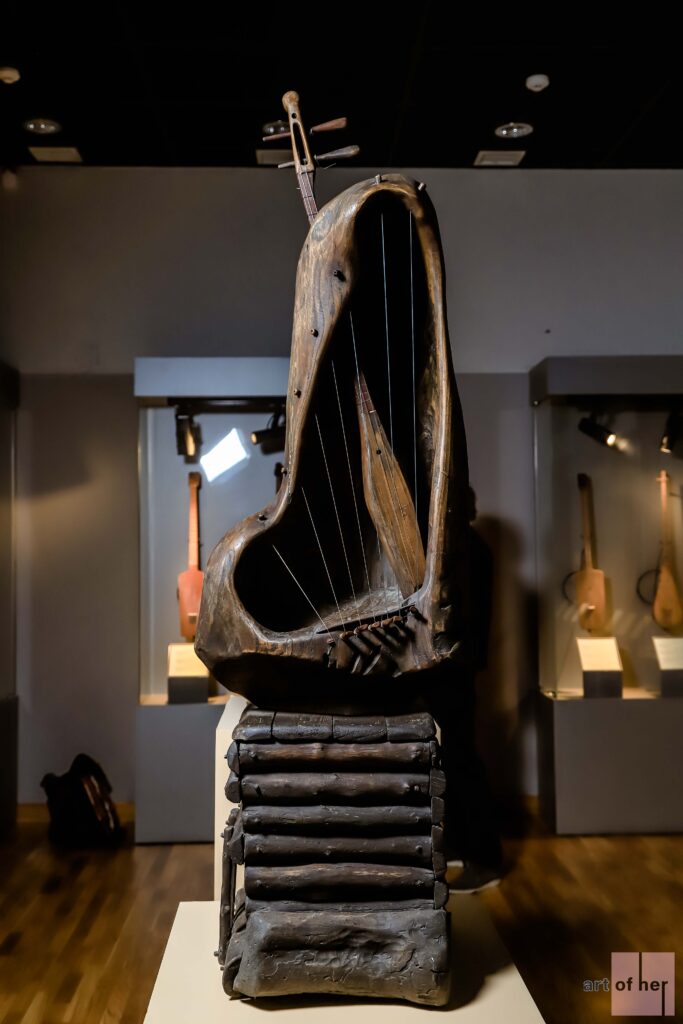
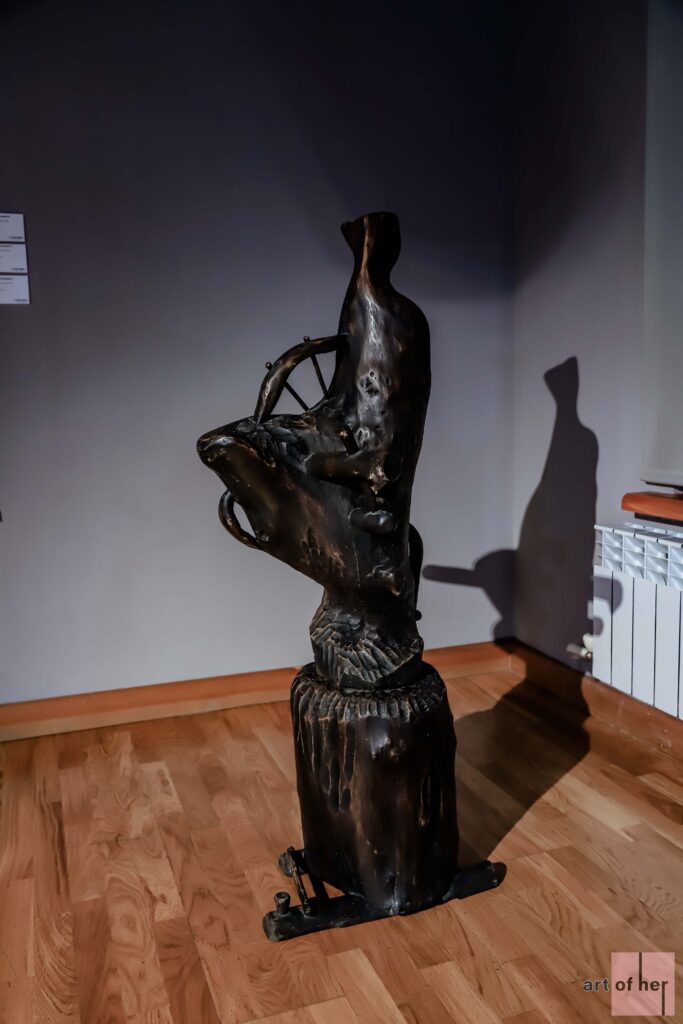
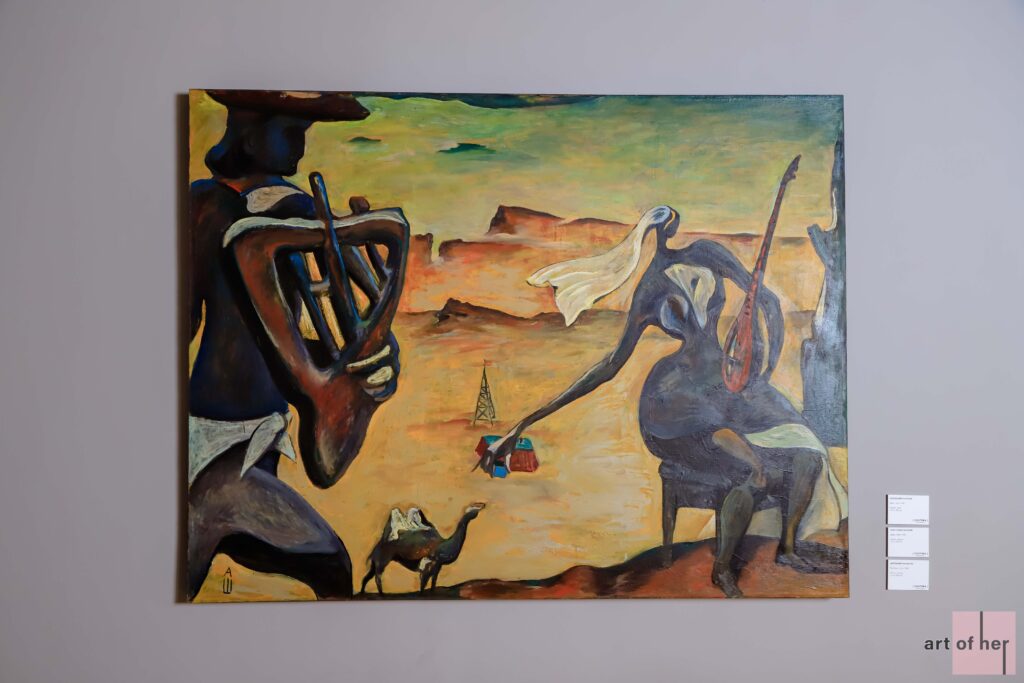
Why did we decide to call the exhibition "Sound off"?
If we look at the top 100 artists who were active at the time of Kyzyl Tractor, a huge number of them use materials from some city (concrete, neon, iron, plastic). In the case of Kyzyl Tractor, I sympathize with the fact that they use organics. It's an anti-urban story. It's more of an organic story that ages and remembers itself worse. Wood lasts less than plastic. And all these meanings are intuitive to me, and I think they're just as intuitive for Kyzyl Tractor.
Sound Off - because, silence is just as important, and we deduce sound from silence. Sound is, according to some theories, not what we hear, but what we don't hear. These voids between the notes are a kind of melody.
There's really nothing sounding here. It would have been elementary to make an exhibition about sound, to have sounds in it. I wanted contrasts.
Don't the constant background melodies of the national instruments in the Ykhlas Museum interfere with the full immersion in the Kyzyl Tractor exhibition?
No, that's cool, too. We bring the museum's permanent collection to life, and that's a huge part of this exhibition, too. Because we didn't want to come to the museum and somehow contrast the exhibition.
A lot of people think that contemporary art is snobbish in relation to past practices. No, just the opposite. Things made in the '90s bring to life things that were made 200 years ago. We're in just such an interesting phase right now that more and more curators are putting the old with something new.
The exhibition wouldn't play anywhere else like the Yhlas Museum of National Instruments.
What does the big 3-meter Kyzyl tractor drum in front of the museum's entrance mean?
It carries several purposes. First, it activates the public space in front of the museum. I'm a big fan of urbanism and third places. I believe that art can collect space around itself. I've always been excited about the connection between the city and the site.
Here we just inserted an irrelevant artifact that immediately catches the eye. There was a big debate with the museum directorate about it. I understand that the object clashes with the architecture of the building, but it was done deliberately.
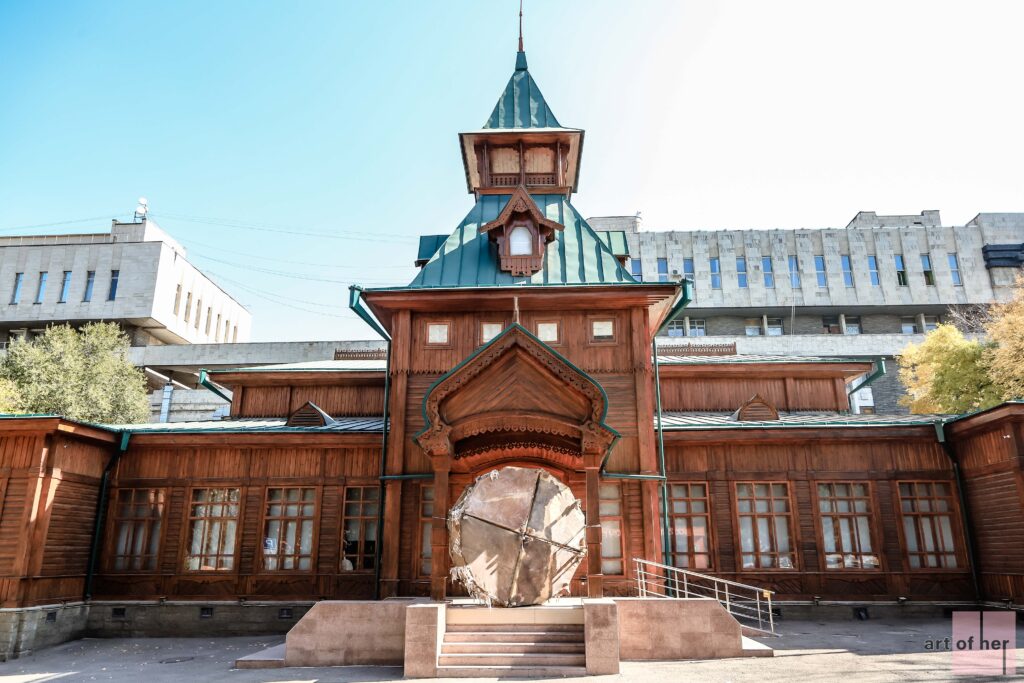
I really like art that democratizes its connection with the audience. I like that in Kyzyl Tractor. These are people who break the distance between the artist and the viewer. That's why the exhibit begins with this kind of manifesto that we are not in a museum, but we are, after all, on the street.
The main exposition of the exhibition belongs to the late Moldakul Narymbetov. Is this some kind of conscious move to pay tribute to the artist or a coincidence?
No, this is actually more of a coincidence. I know Moldakul's materials better. It just so happens that Moldacul was most successful in gathering this very thought around himself.
But it's important to understand here that I relate to the Kyzyl Tractor as one person. It's very difficult for me to separate some things, it's difficult to determine authorship. For example, Kyzyl Tractor does the performance and Said Atabekov shoots it on camera. In terms of ownership, it's Said's work, but the whole group worked.
I wouldn't even want to think that this exhibition is a separate Moldakul.
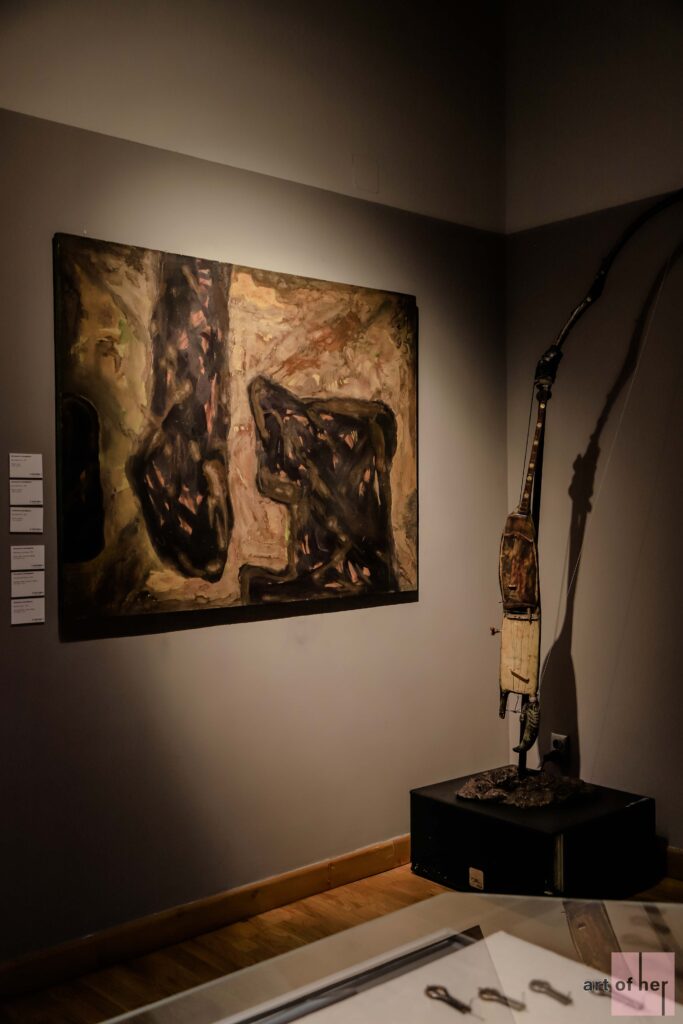
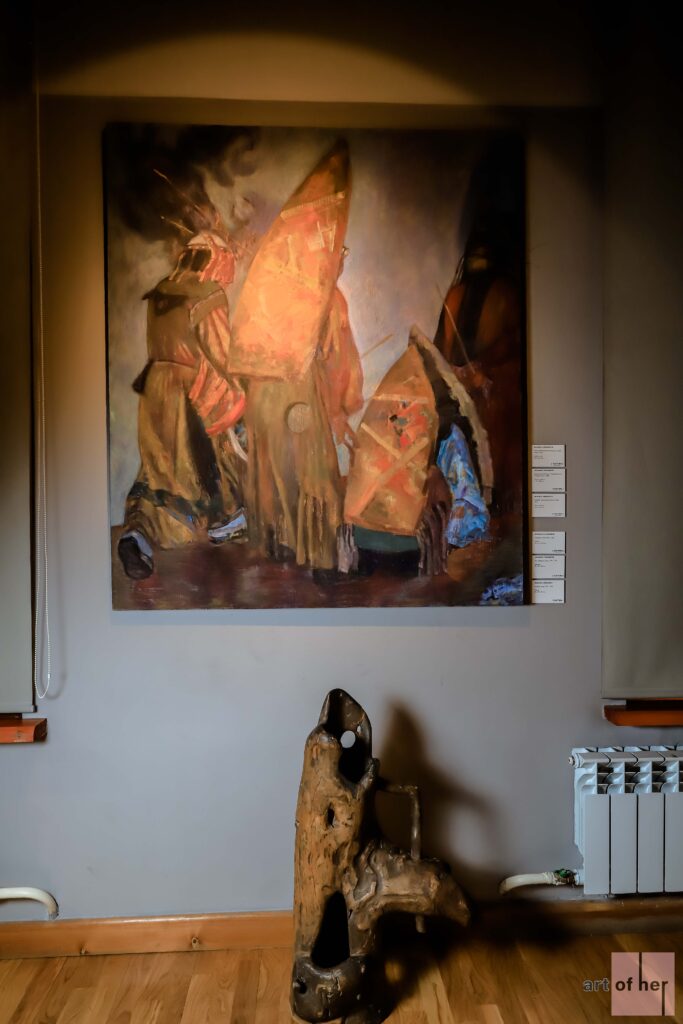

Vitaly Simakov, founder of Kyzyl Tractor, in one of his interviews quoted designer Paco Raban, who said that art has three periods: avant-garde, classic and baroque. Which period is Kyzyl Tractor in now?
I am a supporter of the theory that an artist is most interesting at the beginning of his path and at the end. Take Van Gogh, the juiciest at the beginning and the end.
"Kyzyl Tractor are the founding fathers of contemporary art in Kazakhstan, they get the laurels of deserved fame. Their art is more relevant than ever, they hit the world trend. It's the way it always is in an artist's career: first you suffer for 20 years and then you get it.
But that's my interpretation. "Kyzyl Tractor doesn't always agree with what I say. They are still active artists.
What should the viewer come out as after the "Sound off" exhibition?
I don't want to think for the viewer. Let the viewer come out the way he wants. I don't think good art thinks about the viewer. Neither do curators. The desire to surprise or teach - I'm not in favor of that.
It seems to me that this is a timely exhibition. Because music and its healing properties are hard to deny, they are.
The exhibition "Sound off" takes place at the Yhlas Museum of Folk Music Instruments until November 5, 2022.
Address: st. Zenkova 24.
Opening hours: Tuesday-Sunday from 10:00 to 19:00.
Entrance is paid: from 200 to 500 tenge.

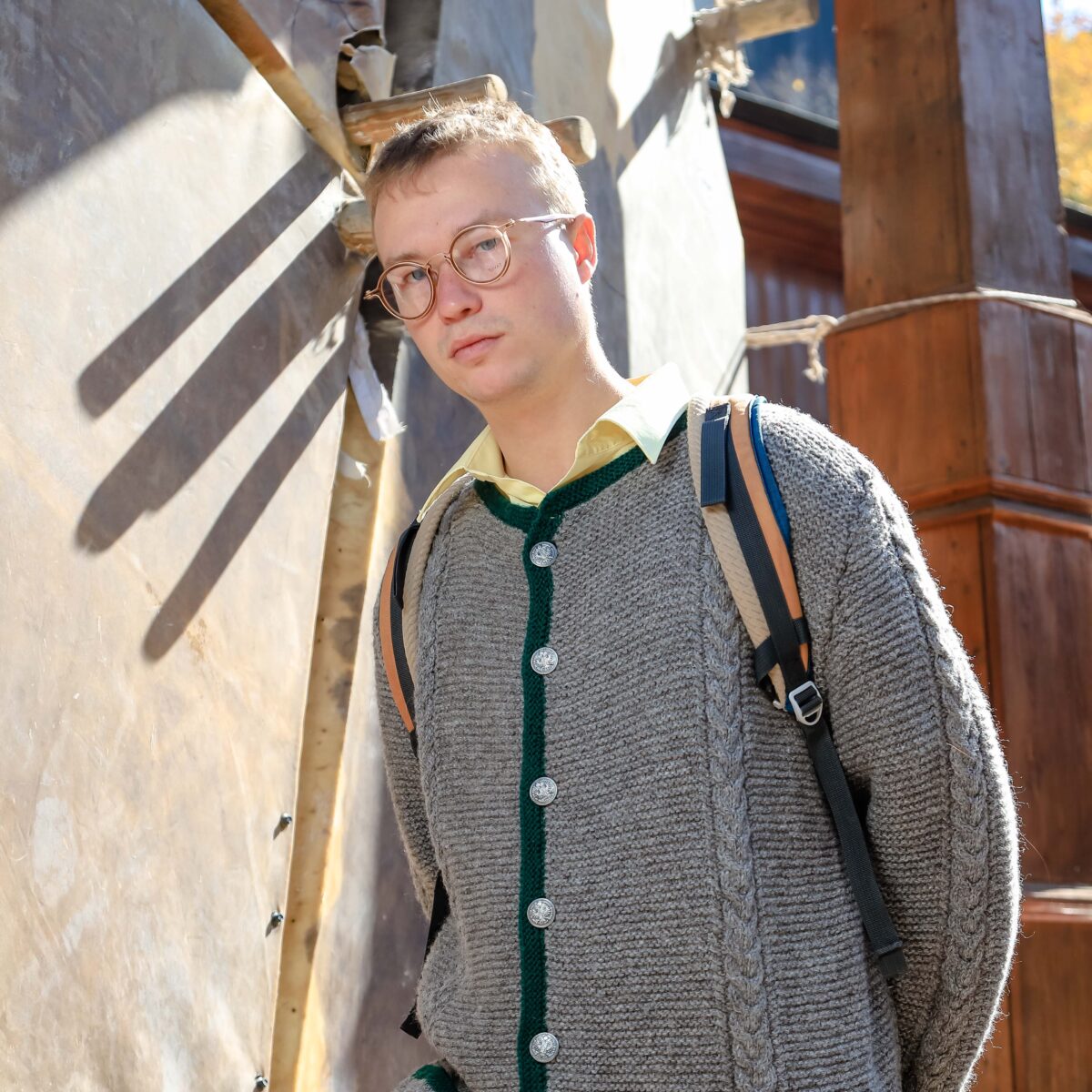

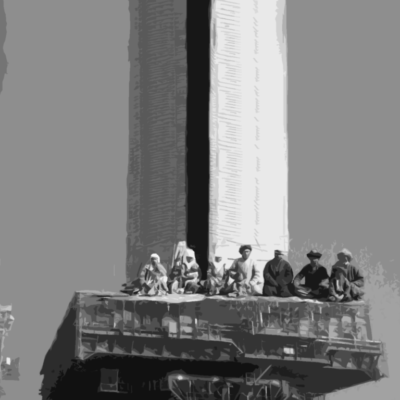
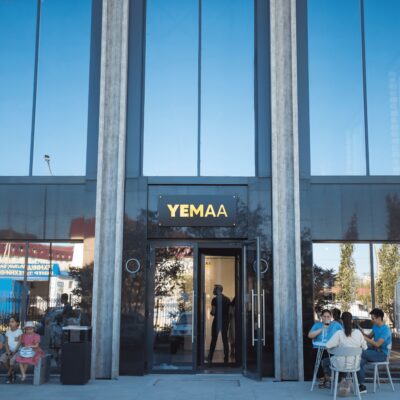

"The mural is a converging idea": how street art improves cities
Eco-activists poured soup over Van Gogh's painting "Sunflowers" for 86 million euros